ARM3C Normand Roland Brissette
|
August 19, 1945
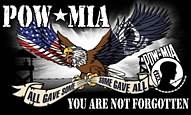
Fondly remembered by
family and friends
| |
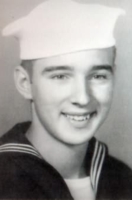
Served Proudly
|
Normand Roland Brissette, ARM3C
1926 1945
ARM3C Normand R.Brissette, At 0815 on August 6, 1945, Normand Roland Brissette, ARM3C (CA), was 750 meters from the epicenter of the atomic bomb impact in Hiroshima, an explosion which changed the world forever. He became the only Naval Combat Aircrewman killed in nuclear combat. Accounts vary slightly but the essentials of Brissette's story are known. He was barely 19 at the time of his death. Brissette was enshrined in the Enlisted Combat Aircrewman Roll of Honor on board USS Yorktown at Mount Pleasant, South Carolina near Charleston in November 2000.
Born and raised in Lowell Massachusetts. He went to St. Luis Elementary school and was a graduate of Lowell High school. After enlisting at age 17, Brissette pursued the arduous path that led to his designation as an aircrewman. This included boot camp, aviation radio school, radar school, gunnery qualifications, and operational training. In order to qualify as a Naval Combat Aircrewman and wear the coveted combat aircrew wings permanently, he would be required to fly in "smell cordite" combat within one year of the completion of operational training.
Brissette's pilot in an SB2C Helldiver squadron was LTJG Raymond Porter from Butler, Pennsylvania. Reveille sounded at 0300 on July 28, 1945, on board USS Ticonderoga. Following breakfast, briefings, preflight planning and checks, VB87 planes were manned by 0500 and airborne soon thereafter. The assigned target was the light cruiser, Tone, anchored in Kure Harbor, a short distance from Hiroshima.
The flight headed due north, maneuvering between Kyushu and Shikoku toward the Inland Sea. While VF and VBF units soared above the clouds, VT and VB aircraft progressed through heavy cloud cover. Some of the VT and VB planes became scattered and upon emergence from the clouds, the aircraft found it necessary to join up again. Shortly, they encountered heavy fire from Japanese shore batteries. Enemy ships and fighters also attacked them. Nevertheless, the Navy planes executed successful bomb and torpedo deliveries on their targets, strafing them as well.
As the Ticonderoga planes were jinking to confuse enemy gunners, two fliers were spotted in a two-man raft, having been shot down. The survivors were Petty Officer Brissette and LTJG Porter. Immediately, air group planes circled overhead to assist the downed aircrew and transmitted distress messages to air-sea rescue units. Tragically, these messages were never received and rescue assets were never dispatched to help Porter and Brissette.
The circling planes stayed as long as they could but reaching low fuel states they had to return to the ship. Porter and Brissette's protecting air cover was gone.
Not long afterwards Japanese personnel picked up the the downed fliers and took them ashore where they were to board a train destined for a POW camp in northern Japan. Other captives already in Japanese custody were two aircrews from American Air Force planes.
The flyers were taken for questoining to Hiroshima Castle, the Hiroshima Military Police Headquarters, located in the center of the city. Not long after, the Enola Gay released its bomb.
Detonation of the weapon collapsed the walls of the police headquarters, enveloping its occupants. The exact number of Americans being detained at the site varies - nine, 10 or 12. In any case, all but two or possibly three Americans, including LTJG Porter, were killed outright. One prisoner was said to have escaped into streets filled with confused, running, screaming, charred human beings. After two days, it was alleged the escaped American was beaten to death by mobs.
Petty Officer Brissette and SSGT Ralph J. Neal had been assigned the task of emptying cesspools at the time of the blast. One report claims that instead of fleeing into the streets, they jumped into the cesspool to escape the firestorm created by the explosion.
Nonetheless, both rapidly acquired radiation poisoning. Some Air Force flyers shot down, captured, and imprisoned on August 8, witnessed their conditions and pain. The Air Force men shot them with morphine but this helped little.
Knowing they might not endure for very long, Brissette and Neal requested that any survivors contact their parents. Brissette and Neal died before dawn on August 19, 1945. Their remains were cremated.
For nearly 30 years the U.S.government denied that any Americans had been killed at Hiroshima. Scuttlebutt and rumors persisted during those times. For years, these heroes were listed only as MIA. Finally, with the advent of The Freedom of Information Act, some light was shed on the secrets. Brissette's ashes were recovered for reinternment in the family plot in Massachusetts.
A memorial for all who became POWs in America's conflicts has been established at the site of the infamous Andersonville prison of the Civil War. A 125-foot plaque, the Hiroshima POW Memorial, has been inscribed with the names the nine known Americans killed at Hiroshima and placed in the National POW Museum at Andersonville Cemetery and National Site in Georgia. Those Americans killed at Hiroshima should be forever memorialized in American History. In words written by President Ronald Reagan on August 5, 1989, "May the memory of their heroism never be lost." |
^ back to top ^
|
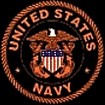

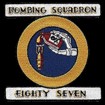





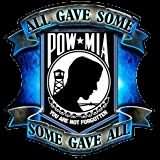 >
>